Tomatoes are a favorite in many gardens. Their juicy, sweet taste is unbeatable.
Knowing when to plant tomatoes ensures a bountiful harvest. Timing is crucial because tomatoes need certain conditions to thrive. The best time varies based on your location and climate. Planting too early or too late can affect growth and yield.
Experienced gardeners know the importance of timing. New gardeners can also achieve success with the right guidance. Understanding when to plant tomatoes will make your gardening efforts more fruitful. Whether you have a large garden or a small balcony, planting at the right time is key. Let’s explore the optimal time to plant tomatoes for the best results.
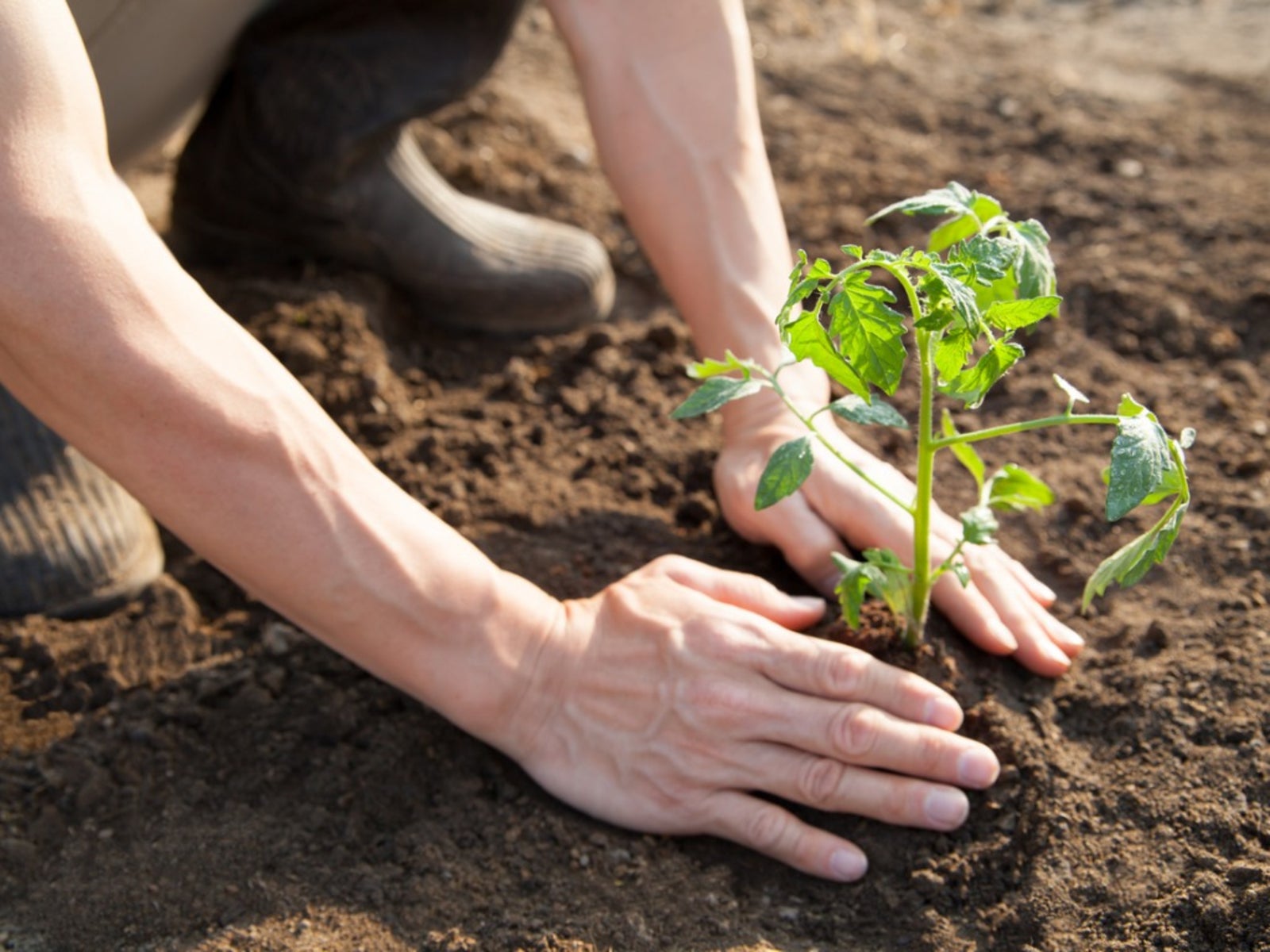
Ideal Planting Season
Tomatoes are a favorite among gardeners. Knowing the best time to plant tomatoes is crucial for a bountiful harvest. The ideal planting season depends on your location and climate. Understanding when is the best time to plant tomatoes can make all the difference in their growth and yield.
Table of Contents
Spring Planting
Spring is often considered the best season for growing tomatoes. As the weather warms up, tomato plants thrive in the pleasant temperatures. Here’s what you need to know about spring planting:
Timing: Plant tomatoes after the last frost date in your area. This ensures the plants are not exposed to freezing temperatures.
- Soil Temperature: The soil should be at least 60°F before planting.
- Daylight: Tomatoes need a lot of sunlight, about 6-8 hours daily.
- Spacing: Plant seedlings about 24-36 inches apart.
Preparation: Preparing the soil is essential for healthy growth. Ensure the soil is rich in nutrients and well-drained.
| Task | Details |
|---|---|
| Soil Test | Check pH level; ideal is 6.0-6.8 |
| Fertilization | Use compost or organic fertilizer |
Taking Care: Regular watering is crucial. Water the plants early in the morning and ensure the soil remains moist. Mulching helps retain moisture and control weeds.
Fall Planting
Fall planting can be equally rewarding. Cooler temperatures can benefit tomato plants, especially in warmer climates. Here’s how to take care of tomato plants during fall:
Timing: Plant tomatoes in late summer to early fall. This allows the plants to mature before the cold sets in.
- Temperature: Ideal daytime temperatures are between 70°F and 85°F.
- Sunlight: Ensure plants receive adequate sunlight, similar to spring planting.
- Spacing: Maintain the same spacing as spring planting, 24-36 inches.
Preparation: Fall soil preparation is similar to spring. Focus on enriching the soil with nutrients.
| Task | Details |
|---|---|
| Soil Test | Check pH level; ideal is 6.0-6.8 |
| Fertilization | Use compost or organic fertilizer |
Taking Care: Watering is critical during the fall. Ensure the soil is consistently moist but not waterlogged. Protect plants from early frost using covers or cloches.
Summary: Both spring and fall are excellent times for planting tomatoes. Knowing when is best time to grow tomatoes and how to take care of tomato plants can lead to a successful harvest.
Climate Considerations
Tomatoes are one of the most popular vegetables grown in home gardens. Knowing the best time to plant tomatoes is crucial for a successful harvest. Climate considerations play a significant role in determining when is the best time to plant tomatoes. Understanding the right temperature range and frost dates can help you decide the best season for growing tomatoes in your area.
Temperature Range
Tomatoes thrive within a specific temperature range. The best time to plant tomatoes is when the temperature is consistently within the ideal range. Tomatoes prefer warm weather, but extreme heat can harm them. The perfect temperature range for planting tomatoes is between 70°F to 85°F during the day and 50°F to 70°F at night.
Here are some key points to consider:
- Daytime temperatures should be consistently above 70°F.
- Nighttime temperatures should not drop below 50°F.
- Temperatures above 90°F can cause the flowers to drop, affecting fruit production.
The table below shows the optimal temperature range for different stages of tomato growth:
| Growth Stage | Temperature Range (°F) |
|---|---|
| Germination | 70-80 |
| Seedling Growth | 65-75 |
| Flowering | 70-85 |
| Fruit Development | 70-85 |
Maintaining this temperature range ensures healthy growth and maximizes your tomato yield. Paying attention to local climate patterns can guide you to the best time to plant tomatoes in your region.
Frost Dates
Frost can be detrimental to tomato plants. Knowing the frost dates in your area is essential for deciding when is the best time to plant tomatoes. The last frost date in spring and the first frost date in fall define the growing season for tomatoes.
Here are some tips on how to take care of tomato plants concerning frost dates:
- Plant tomatoes after the last spring frost date to avoid damage to young plants.
- Use local frost date calendars to determine the best season for growing tomatoes.
- Consider using frost protection methods like row covers if planting early.
The table below illustrates typical frost dates for various regions:
| Region | Last Spring Frost Date | First Fall Frost Date |
|---|---|---|
| North | May 15 | October 15 |
| South | March 15 | November 15 |
| Midwest | April 30 | October 1 |
| West | April 15 | November 1 |
Planting tomatoes after the last frost date ensures the young plants will not face frost damage. Checking local frost date calendars helps you determine the best time to plant tomatoes and ensure a healthy, productive garden.
Soil Preparation
Planting tomatoes at the right time can lead to a bountiful harvest. Proper soil preparation is crucial for healthy tomato plants. Preparing the soil helps ensure that your tomatoes get the nutrients they need to thrive. Learn about soil type and nutrient requirements to give your tomatoes the best start.
Soil Type
Choosing the right soil is essential for growing tomatoes. Tomatoes thrive in well-drained, loamy soil. This type of soil holds moisture but drains well, preventing root rot. Sandy loam is ideal because it provides good drainage and enough nutrients.
Avoid heavy clay soils as they can retain too much water, leading to root diseases. If your garden has clay soil, consider amending it with organic matter.
Here are some tips for soil preparation:
- Test the soil’s pH level. Tomatoes prefer a pH between 6.0 and 6.8.
- Mix compost or well-rotted manure into the soil to improve texture and fertility.
- Ensure the soil is loose and crumbly to allow roots to penetrate easily.
Using raised beds can also help with soil drainage. Raised beds warm up faster in spring, making it the best time to plant tomatoes.
Here’s a table summarizing the ideal soil conditions:
| Soil Type | Characteristics |
|---|---|
| Loamy Soil | Well-drained, nutrient-rich |
| Sandy Loam | Good drainage, holds moisture |
| Clay Soil | Heavy, poor drainage |
Nutrient Requirements
Tomatoes need a variety of nutrients to grow strong and produce fruit. Knowing what nutrients to add to your soil can improve plant health and yield.
Tomatoes require:
- Nitrogen (N): Promotes leafy growth.
- Phosphorus (P): Essential for root development and flowering.
- Potassium (K): Helps with fruit formation and disease resistance.
A balanced fertilizer with an N-P-K ratio of 5-10-10 is suitable for tomatoes. Organic options like fish emulsion or bone meal can also provide these nutrients.
Here are some tips on how to take care of tomato plants regarding nutrient needs:
- Start with a soil test to determine existing nutrient levels.
- Amend the soil with compost or organic matter to boost fertility.
- Use slow-release fertilizers to provide consistent nutrients.
During the growing season, side-dressing with additional fertilizer can support ongoing growth. The best season for growing tomatoes is spring, so prepare your soil nutrients early for a successful harvest.
Remember, the best time to plant tomatoes depends on soil readiness. Proper soil preparation ensures healthy plants and a fruitful yield.

Seed Starting Techniques
Tomatoes are a favorite among gardeners due to their versatility and delicious taste. Knowing the best time to plant tomatoes is crucial for a successful harvest. Seed starting techniques can make all the difference in growing strong and healthy plants. Let’s explore some effective methods to get your tomato garden off to a great start.
Indoor Starting
Starting tomato seeds indoors is a popular method. It gives the plants a head start before they are transplanted outside. This technique is especially useful when the best season for growing tomatoes hasn’t arrived yet. Here’s how to take care of tomato plants when starting indoors:
- Choose the right containers: Use seed trays, small pots, or peat pellets.
- Use quality seed starting mix: Ensure the soil is light and well-drained.
- Sow seeds at the right depth: Plant seeds about ¼ inch deep.
- Maintain proper moisture: Keep the soil consistently moist, but not waterlogged.
- Provide adequate light: Use grow lights or place containers near a sunny window.
- Keep the temperature right: Ideal temperature for germination is between 70-75°F.
- Transplant carefully: Harden off seedlings before moving them outdoors.
A simple table for indoor starting:
| Step | Description |
|---|---|
| Choosing Containers | Seed trays, small pots, or peat pellets |
| Seed Depth | ¼ inch deep |
| Temperature | 70-75°F |
| Light Source | Grow lights or sunny window |
Indoor starting allows gardeners to control the growing environment, ensuring that tomato plants get a strong start before facing outdoor conditions.
Direct Sowing
Direct sowing is another method for planting tomatoes. This technique involves planting seeds directly into the garden soil. It’s best used when the weather conditions are favorable. Knowing when is the best time to plant tomatoes outdoors can make this method successful. Follow these steps for direct sowing:
- Wait for the right season: The best season for growing tomatoes is after the last frost.
- Prepare the soil: Ensure the soil is well-drained and rich in organic matter.
- Plant at the correct depth: Sow seeds ¼ inch deep in rows.
- Space seeds adequately: Space seeds about 2 feet apart to allow room for growth.
- Water properly: Keep the soil consistently moist until germination.
- Protect seedlings: Use row covers if temperatures drop unexpectedly.
Here’s a table summarizing direct sowing:
| Step | Description |
|---|---|
| Season | After last frost |
| Soil Preparation | Well-drained, rich in organic matter |
| Seed Depth | ¼ inch deep |
| Spacing | 2 feet apart |
| Watering | Consistently moist |
Direct sowing is straightforward and can be very effective. It eliminates the need for transplanting, and the plants grow where they will mature.
Transplanting Tips
Transplanting tomatoes is an essential step in ensuring a bountiful harvest. It’s crucial to know the best time to plant tomatoes and how to take care of tomato plants once they are in the ground. Successful transplanting involves more than just placing the plant in soil; it requires careful timing and acclimatization. Mastering these techniques will help your tomato plants thrive.
Timing Transplants
The best time to plant tomatoes is a delicate balance between weather conditions and plant readiness. Tomatoes thrive in warm climates, so the best season for growing tomatoes is typically late spring to early summer. Timing is critical:
- Check the last frost date: Ensure that the danger of frost has passed. Tomatoes are sensitive to cold.
- Look at soil temperature: Ideal soil temperature is around 60°F (15°C) for tomato plants.
- Examine plant maturity: Seedlings should have true leaves and be 6-8 inches tall.
Planting too early can stunt growth, while late planting might shorten the growing season. If you’re uncertain about when is the best time to plant tomatoes, consider local climate patterns and consult gardening experts. Here’s a simple table to guide you:
| Season | Action |
|---|---|
| Late Spring | Start Transplanting |
| Early Summer | Optimal Growth Phase |
Acclimatization
Transitioning tomato plants from indoor to outdoor environments requires acclimatization. This process is essential for the health of your plants. Here’s how to take care of tomato plants during this phase:
- Start with shade: Place plants in a shaded area for a few hours each day.
- Gradually increase sunlight: Over several days, increase exposure to sunlight.
- Monitor wind exposure: Protect young plants from strong winds.
Acclimatization helps plants adjust to temperature fluctuations and intense sunlight. A gradual approach prevents shock and promotes resilience. Remember, the best time to plant tomatoes outdoors is when nighttime temperatures consistently stay above 50°F (10°C). Use these tips to ensure your tomato plants are robust and ready to thrive in their new environment.

Regional Variations
Planting tomatoes can be a rewarding experience. Choosing the best time to plant tomatoes depends on your region’s climate. Regional variations in weather conditions affect when is the best time to plant tomatoes. Understanding these variations helps ensure a successful harvest. This section explores how cool and warm climates influence the best season for growing tomatoes.
Cool Climates
In cooler regions, timing is crucial for planting tomatoes. The best time to plant tomatoes is after the last frost. Frost can damage young plants, so waiting is important. Typically, late spring is ideal. Gardeners in cool climates should watch weather forecasts closely.
Here are some tips for planting tomatoes in cool climates:
- Start indoors: Begin with seeds indoors 6-8 weeks before the last frost.
- Use protective covers: Use row covers to shield plants from unexpected frost.
- Choose early varieties: Opt for tomatoes that mature quickly.
Below is a table showing average planting times in cool regions:
| Region | Planting Time |
|---|---|
| Northwest | Late May |
| Northeast | Early June |
| Upper Midwest | Mid May |
Cool climate gardeners should monitor soil temperature. Tomatoes thrive when soil is above 60°F. Proper care ensures healthy growth. Knowing when is best time to grow tomatoes helps achieve a bountiful yield.
Warm Climates
Warm climates offer a longer growing season for tomatoes. The best time to plant tomatoes is earlier than in cooler areas. Late winter or early spring is ideal. Mild winters make these regions perfect for early planting.
Consider these steps for planting in warm climates:
- Plant early: Start planting when temperatures stabilize around 70°F.
- Mulch for moisture: Use mulch to retain moisture and keep roots cool.
- Water consistently: Regular watering is essential due to higher evaporation.
Below is a table showing average planting times in warm regions:
| Region | Planting Time |
|---|---|
| Southwest | Late February |
| Southeast | Early March |
| California | Mid March |
Warm climate gardeners enjoy a longer harvest period. Knowing the best season for growing tomatoes allows for multiple harvests. Proper care, including watering and mulching, ensures healthy plants. Understanding how to take care of tomato plants leads to fresh, juicy tomatoes.
Common Mistakes
Tomatoes are a favorite among home gardeners. Knowing the best time to plant tomatoes is crucial for a successful harvest. Many gardeners make common mistakes that can hinder their efforts. Understanding these mistakes can help you avoid them and ensure a bountiful crop.
Too Early Planting
Planting tomatoes too early is a common mistake. It can lead to stunted growth or even plant death. Here are some reasons why planting too early can be problematic:
- Cold Soil: Tomato plants need warm soil to thrive. If planted too early, the soil may still be cold, leading to poor growth.
- Frost Risk: Early planting increases the risk of frost damage. Tomatoes are sensitive to frost, which can kill young plants.
- Slow Growth: Even if there is no frost, cold temperatures can slow down plant growth, delaying the harvest.
To avoid these issues, it’s essential to wait until the soil has warmed up. A good rule of thumb is to wait until the nighttime temperatures are consistently above 50°F (10°C). Using a soil thermometer can help you determine when the soil is warm enough for planting.
Here is a simple table to guide you:
| Temperature | Action |
|---|---|
| Below 50°F (10°C) | Wait to plant |
| Above 50°F (10°C) | Safe to plant |
Ignoring Local Conditions
Ignoring local conditions is another common mistake. Each region has different climate patterns that can affect the best time to plant tomatoes. Here are some factors to consider:
- Frost Dates: Knowing the last frost date in your area is crucial. Planting after this date reduces the risk of frost damage.
- Soil Type: Different soils warm up at different rates. Sandy soils warm up faster than clay soils.
- Microclimates: Urban areas or sheltered spots can have different temperatures than rural or exposed areas.
Consulting a local gardening guide or extension service can provide valuable information on the best time to plant tomatoes in your area. Pay attention to local weather forecasts and adjust your planting schedule accordingly.
Here are some tips to help you consider local conditions:
- Check the average last frost date for your area.
- Monitor soil temperature using a soil thermometer.
- Adjust planting time based on your specific microclimate.
Understanding and adapting to local conditions ensures that your tomato plants get the best start. This knowledge can lead to a healthier and more productive garden.
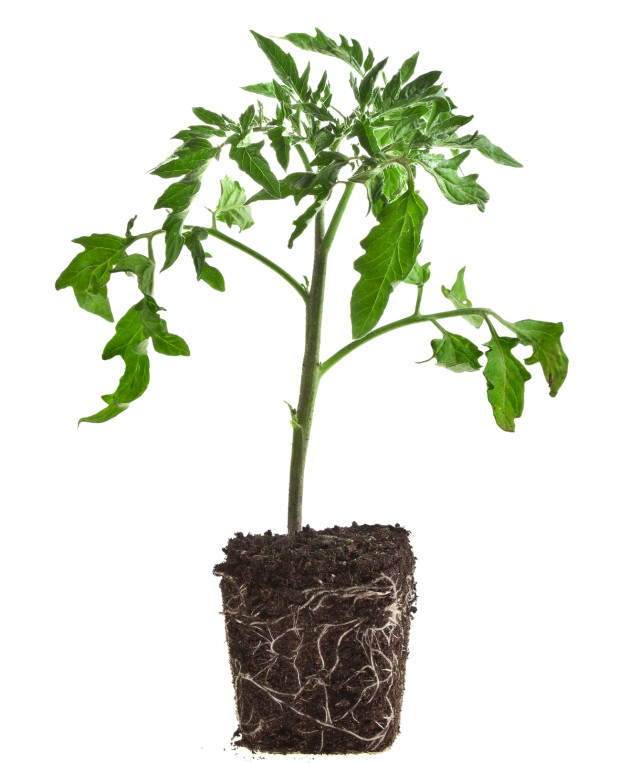
Frequently Asked Questions
What Is The Best Month To Plant Tomatoes?
The best month is usually late spring. May is ideal in most areas.
Can You Plant Tomatoes In Summer?
Yes, but early summer is best. Avoid the peak heat.
What Temperature Is Best For Growing Tomatoes?
Tomatoes thrive in temperatures of 70-80°F (21-27°C).
How Much Sunlight Do Tomatoes Need?
Tomatoes need 6-8 hours of full sunlight daily.
Should I Start Tomatoes Indoors?
Yes, start seeds indoors 6-8 weeks before the last frost.
Can Tomatoes Grow In Pots?
Yes, tomatoes can grow well in pots with proper care.
How Often Should You Water Tomato Plants?
Water them deeply once a week. More in hot weather.
Conclusion
Planting tomatoes at the right time boosts growth and yield. Choose a spot with full sun and rich soil. Water regularly but do not overwater. Timing varies by region. Warmer areas can plant earlier, cooler areas later. Watch for frost dates to avoid damage.
Follow these tips for healthy, thriving tomato plants. Enjoy fresh tomatoes from your garden. It’s rewarding and delicious. Happy gardening!



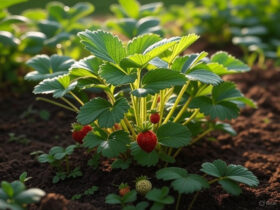



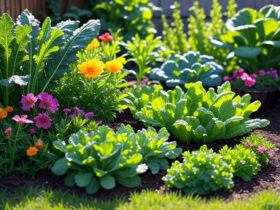
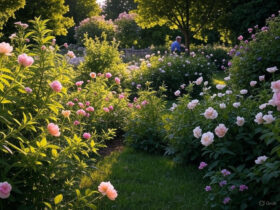

Leave a Reply